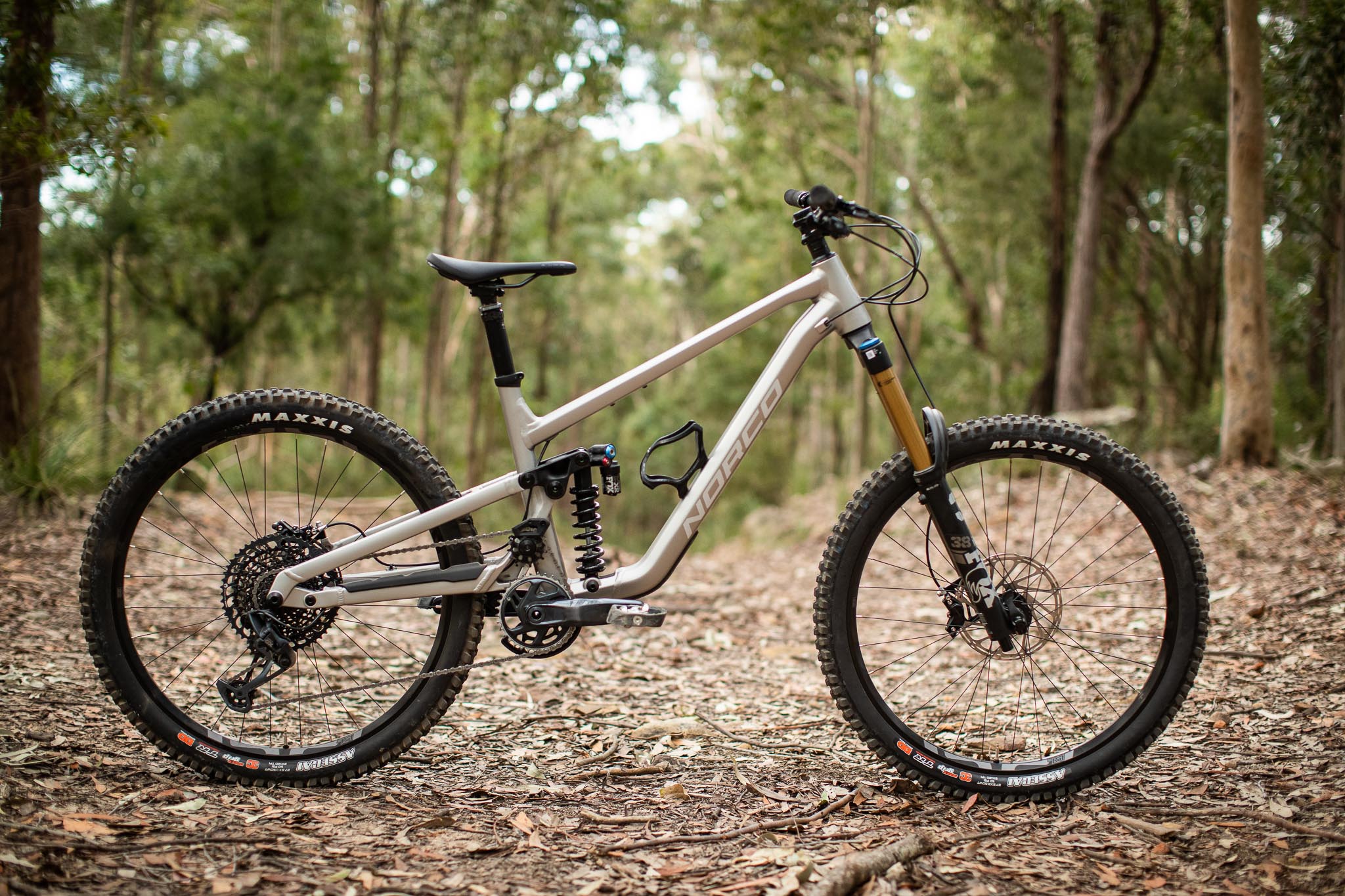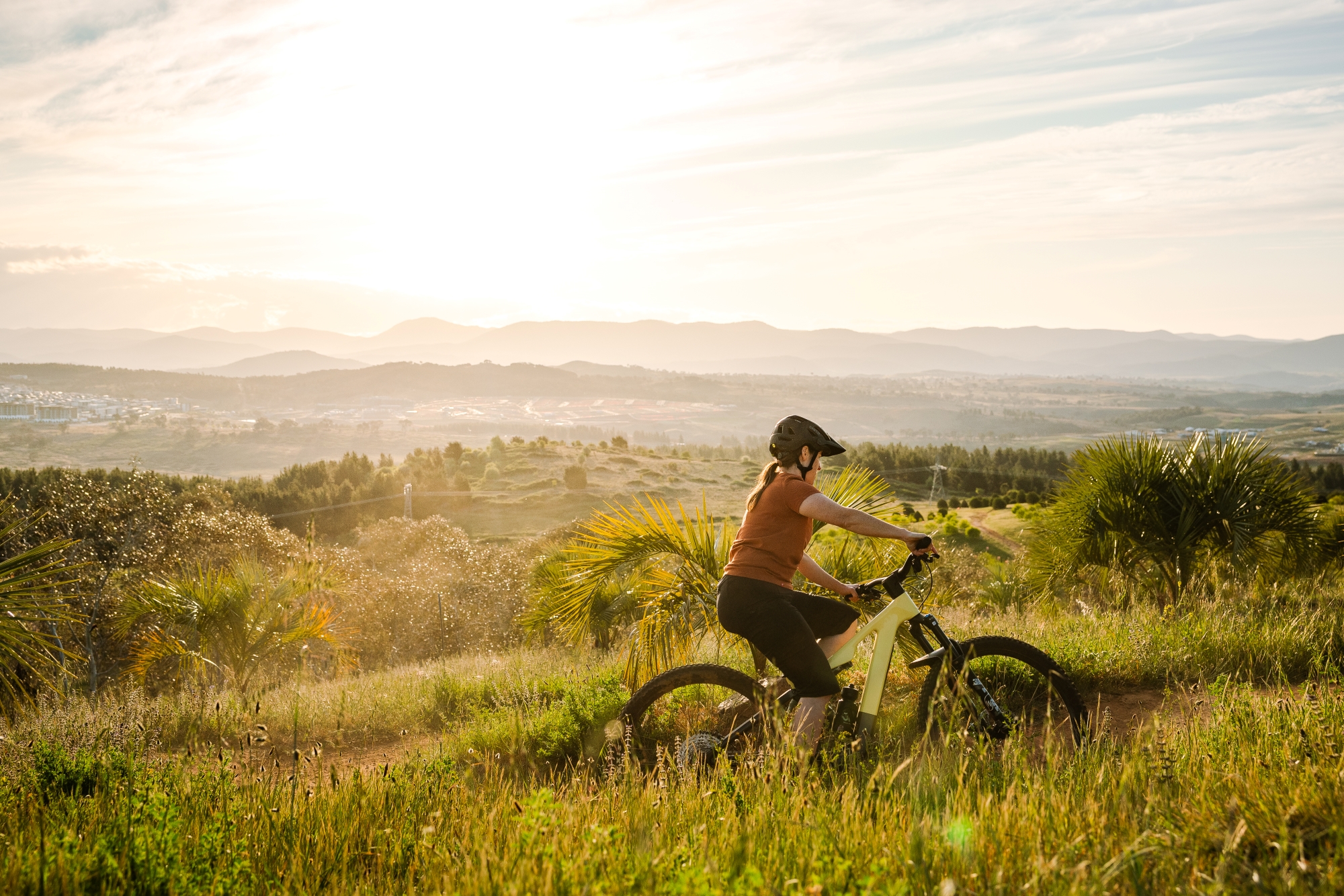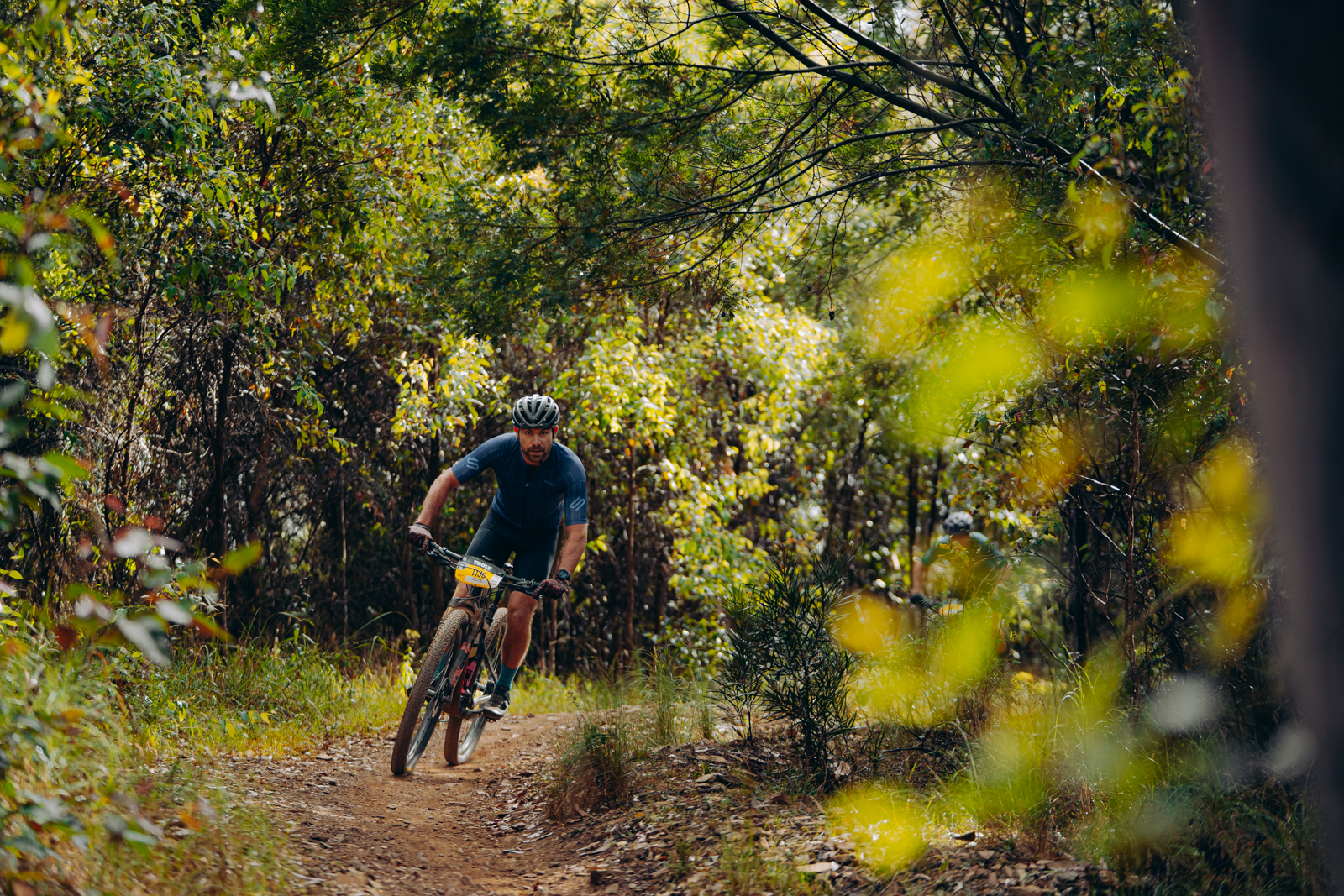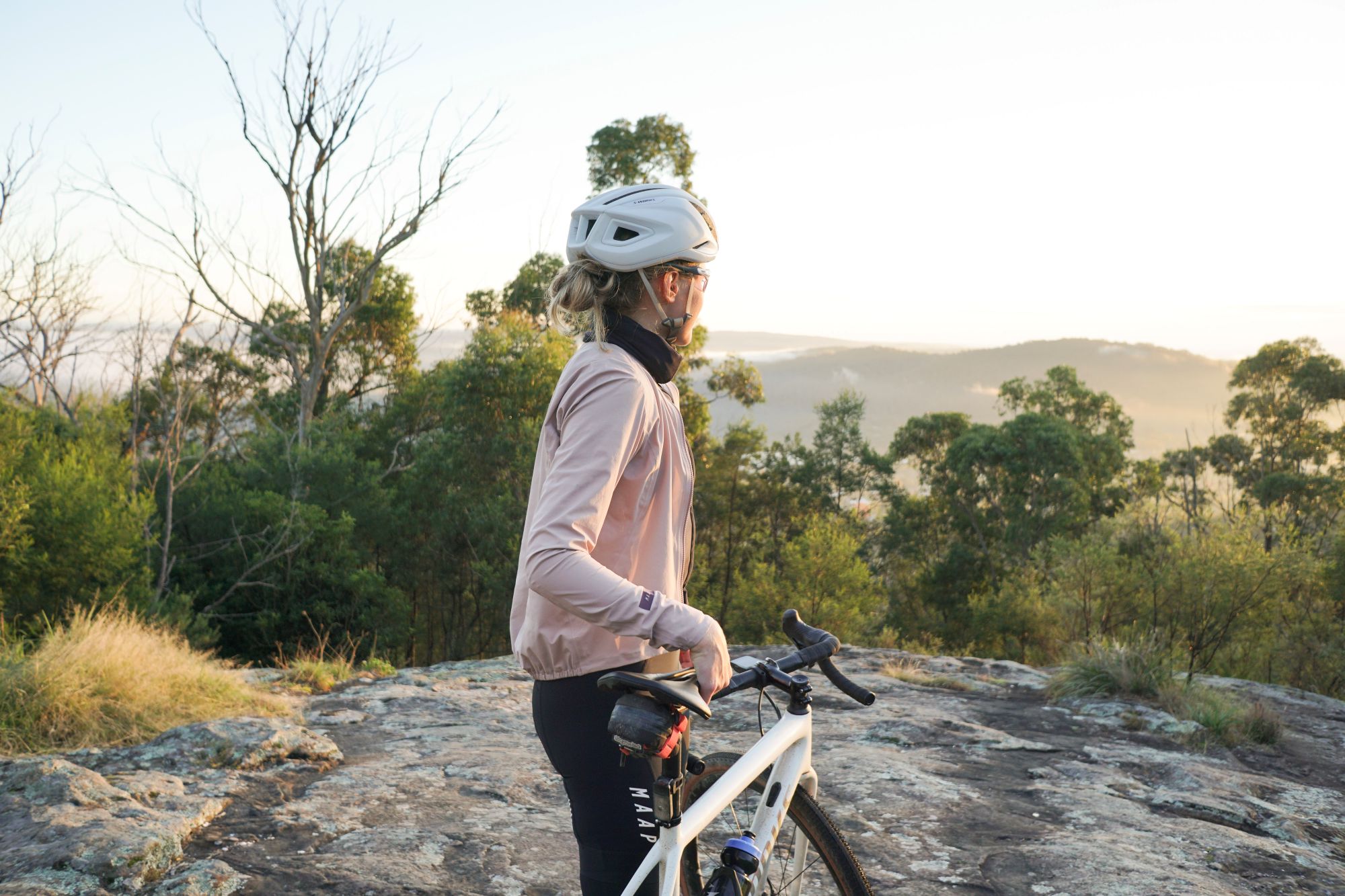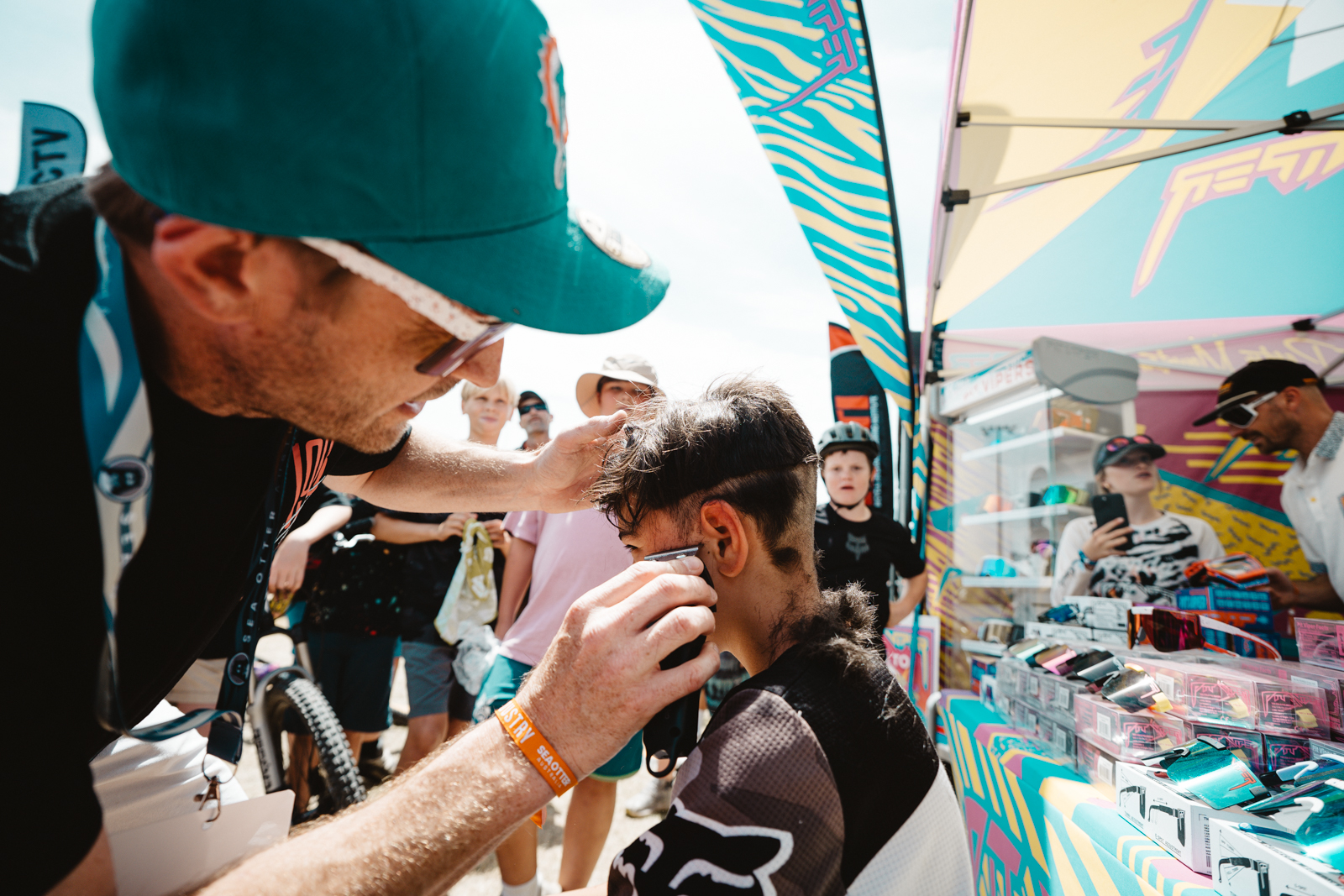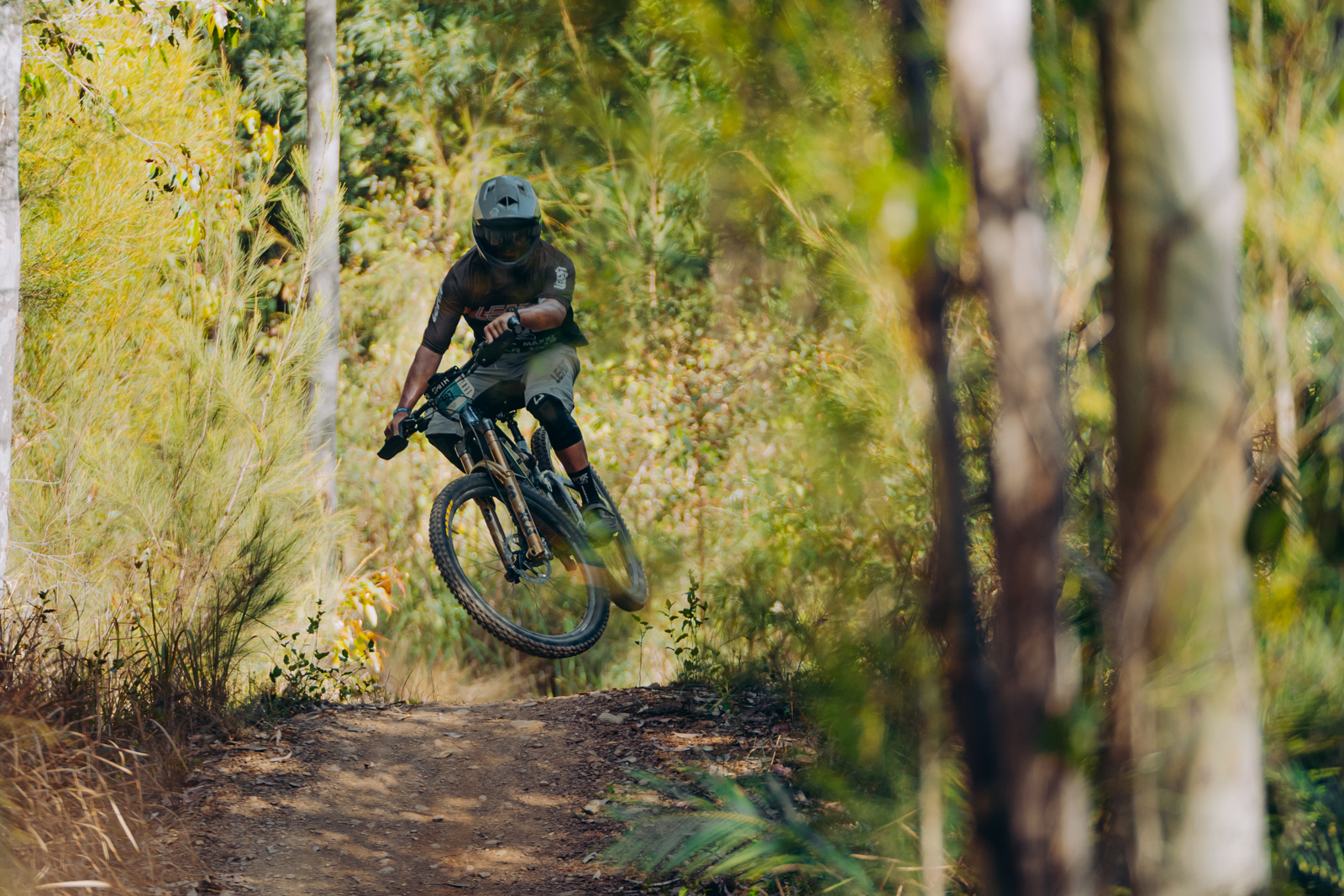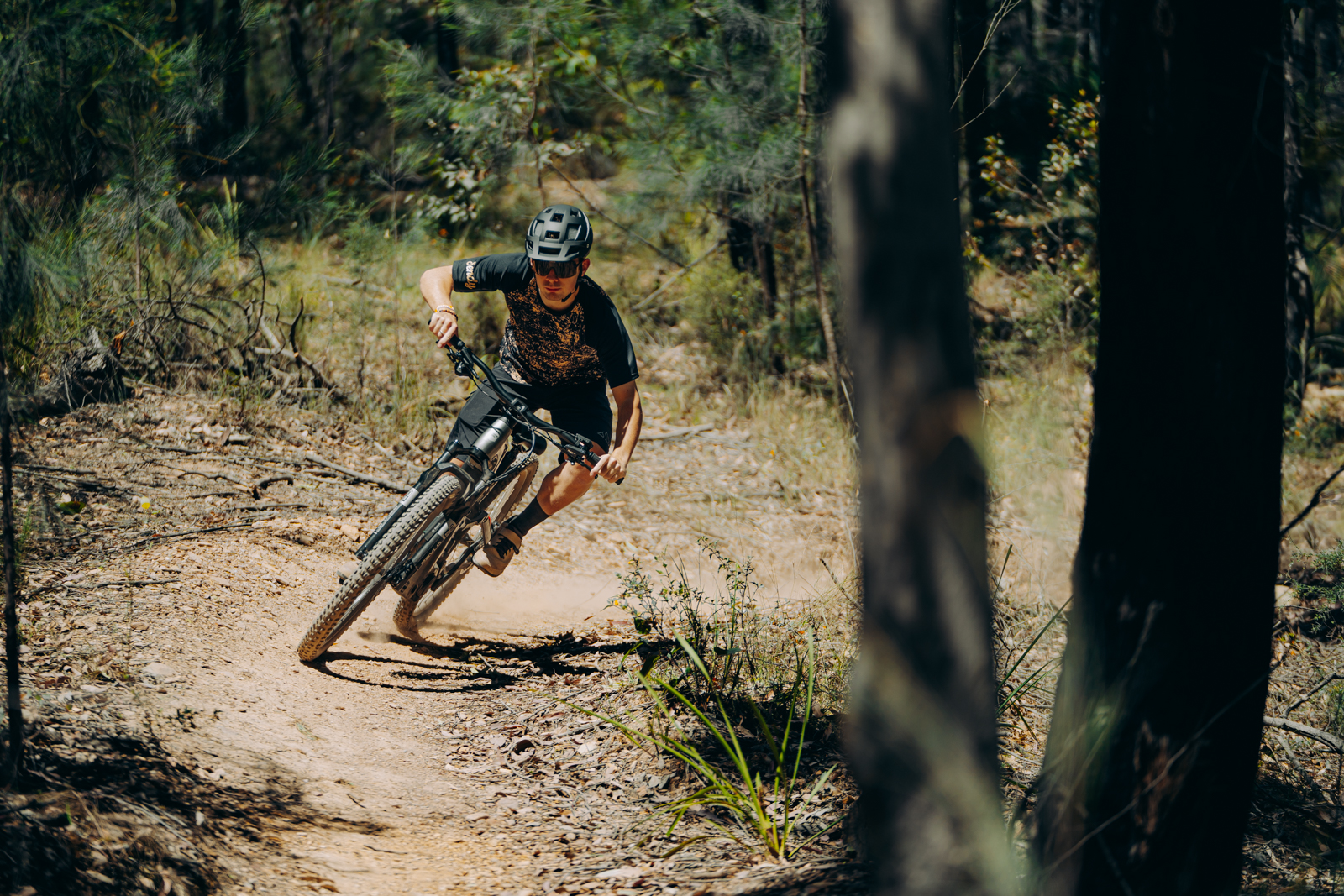TESTED: Norco Shore 1
The traction and stability on offer with the Shore in ultra-rough terrain is second to none, and in rough straights I never felt like I hit the limits of the bike.
Photographer: Tim Bardsley-Smith
The Norco Shore is a unique bike. Whilst there’s potentially more bikes with 150mm-170mm of rear travel than any other market segment, bikes with 180mm of rear travel are far less common. Another uncommon element in 2022 is a bike rolling on 27.5” wheels front and rear, with some other examples being the Canyon Torque and Rocky Mountain Slayer.
The Norco Shore is offered in four variants in Australia. The top-of-the-line Shore 1 is the bike I had on test. Then there’s the Shore Park, which is uplift only due to its Boxxer fork and 7 speed drivetrain. The last complete bike in the lineup is the Shore 2, which comes in at $5999. There’s also a frame kit that’s the same frame and shock used on the Shore 1 priced at $3399.
With 180mm of travel front and rear and 27.5” wheels, Norco pitch the Shore as ‘the ultimate Freeride and Big Mountain rig.’ Unlike the freeride bikes of old that were usually push run machines, the Shore will get you to the top via the pedals with a 10-52 cassette and a 77.7-degree effective seattube angle.
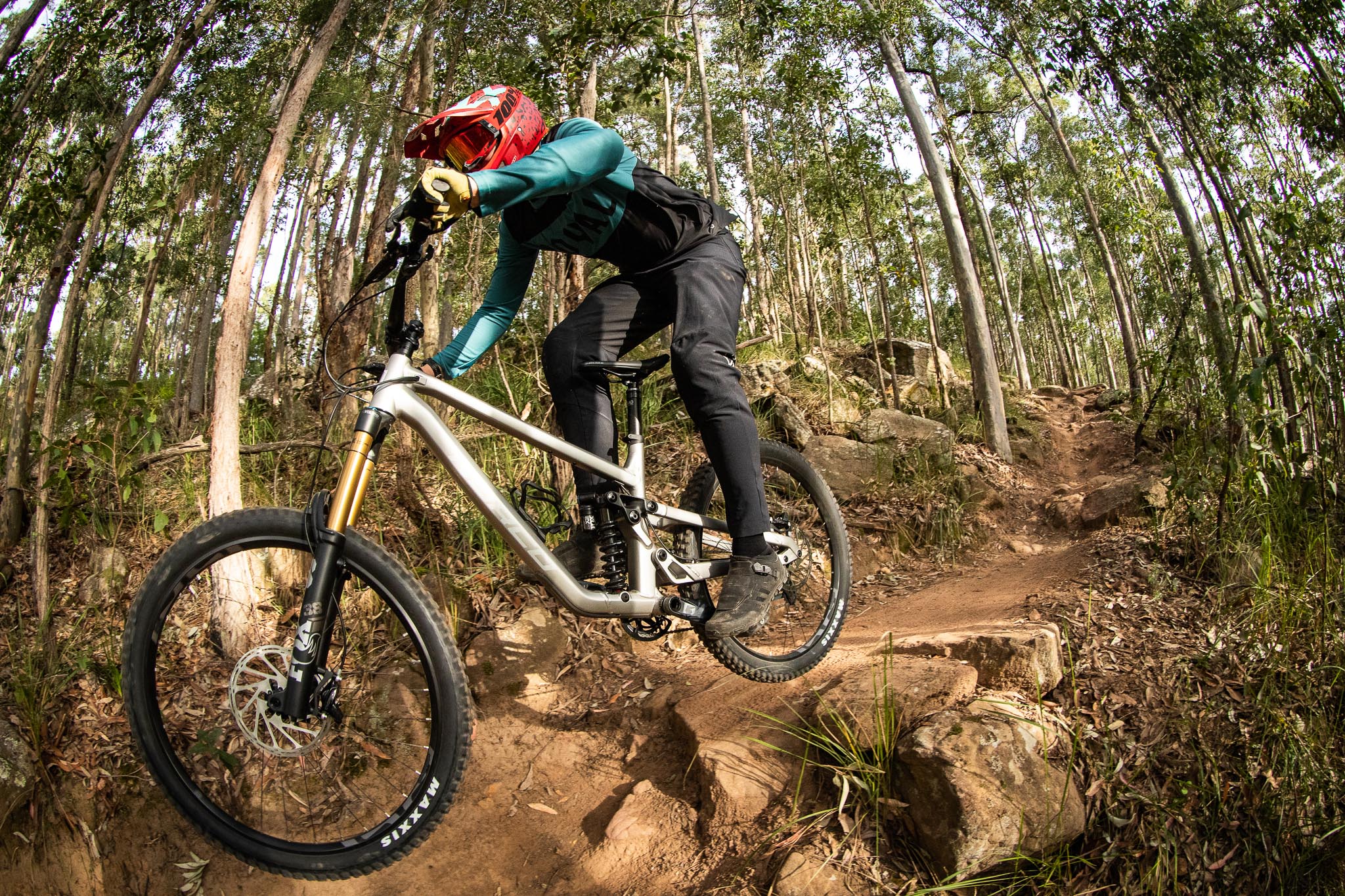
Tester: Will Shaw
Riding Experience: More than my looks would suggest
Generally Rides: Moustache Game 6, Nukeproof Scout 290, Norco One25, Norco Section A1
Height: 186cm
Weight: 84kg
Bike Test Track: Newcastle and surrounds
Initial Impressions
The Shore’s frame is an entirely aluminium affair, with chunky tube profiles and serious welds reminding you the bike is built for sending, not scales. The frame comes with downtube and seat tube protection, and there’s both a chainguide integrated into the high pivot design and a bash guard to protect the chainring. The burly look of both the Shore’s frame and fully built-up stature matches its heavy hitting intentions.
The spec sheet gets the tick of approval from me for aggressive riding. With suspension handled by Fox’s top of the line factory products in the form of a 38 Factory Fork and DHX2 coil shock, the bike’s suspension is highly adjustable. Norco have designed the Shore range specifically around a coil shock, which I’ll touch on more later.
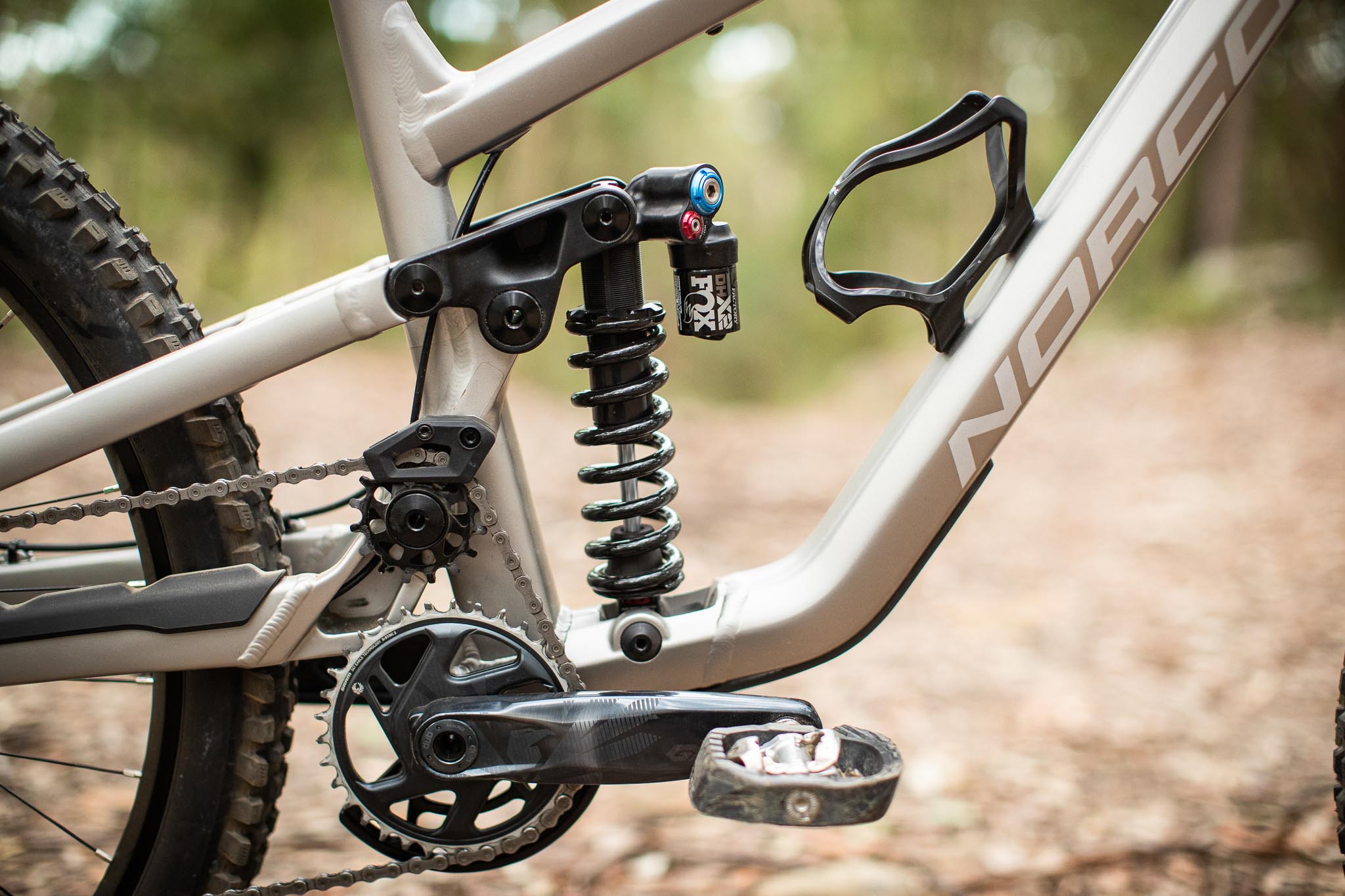
The drivetrain and brakes are a full SRAM affair, and GX Eagle is a workhorse group set that’ll get the job done day in, day out. The Code RSC brakes have some of the best modulation out there, and the powerful metallic pads are a good match for the speed the Shore craves. 200mm rotors front and rear should be sufficient for most considering the dual 27.5” wheel setup.
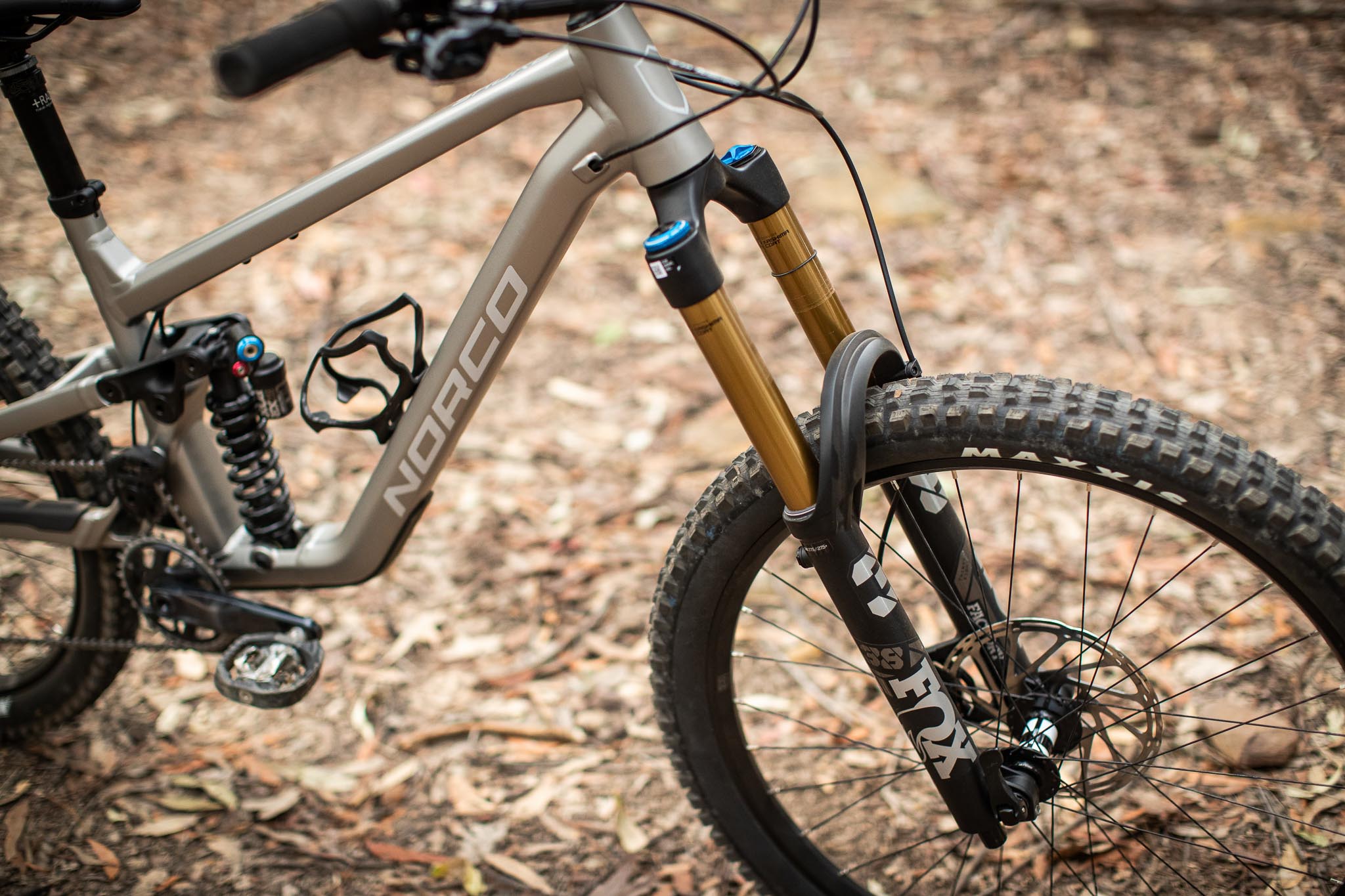
Another spec inclusion I’m a fan of is size specific droppers (my size large came with a 200mm post), and Norco have also opted for a 34.9mm seatpost diameter. Using the larger diameter should make for a more reliable post over time. This is particularly relevant for a dropper that will spend a lot of its time fully extended as the rider spins to the top.
Other finishing touches like the Deity Ridgeline bar and DMR Deathgrips are nice to see. Norco have also opted for DT Swiss’ classic 350 hubs laced to e*thirteen’s LG1 DH rims for the wheel build. They haven’t mucked around in the tyre department either, speccing Maxxis Assegai DD tyres front and rear in Maxxis’ grippy 3C compound. Whilst the large Shore 1 I had weighed in at 17.35kg without pedals and 17.97kg with pedals and a bottle cage, the spec really is bang on for this style of bike. I’m not sure where you’d save too much weight and retain the durable nature of the build.
Setting up the bike out of the box was simple. With plenty of steerer showing you can opt for Jack Moir levels of bar height should you wish, and suspension setup is a breeze with Fox’s in-depth guides.
On The Trail
Most of my rides begin with a 10 to 20 minute ride to the trailhead, depending on the type of bike I’m riding. With the Shore 1, this was at the 20-minute side of the scale. With no shock lockout, there is some bob when pedalling, and the grippy Assegai combo front and rear isn’t exactly the perfect combination for flat bike paths. Despite being slower than bikes with less travel and bigger wheels, the seated pedalling position is quite comfortable, and the steeper seattube angle suits my preference for feeling over the bottom bracket when pedalling.
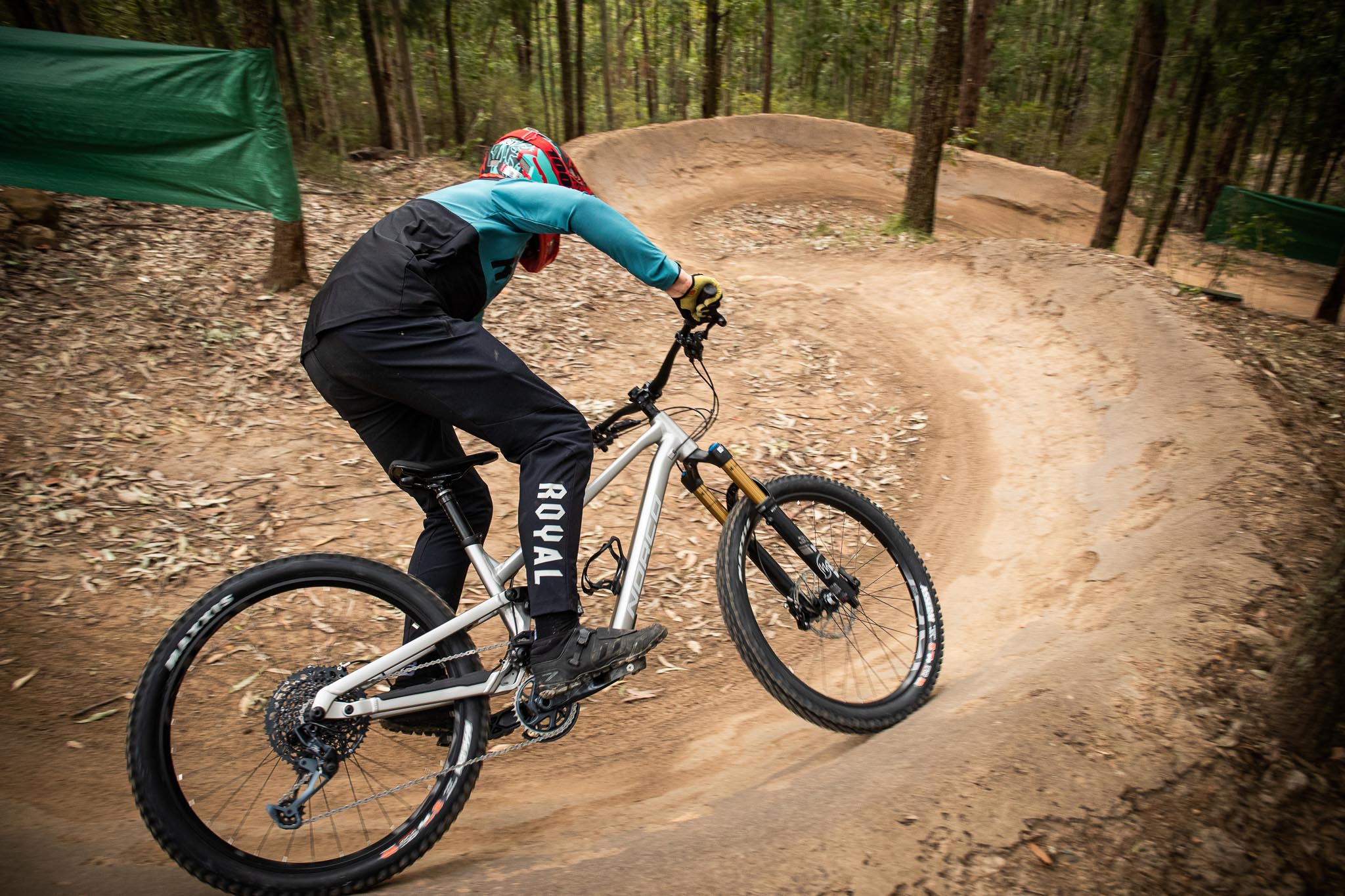
Most of the time I access descents via pedalling, and the Shore 1 is up there with the slowest climbing bike I’ve ever ridden. Whilst slow, the seated pedalling position is comfortable for spinning, so the Shore 1 is a nice bike to zone out on and tap to the top. The rear suspension is incredibly active so on rougher climbs there’s plenty of traction, and the 34/52 tooth climbing gear is enough for most situations.
Pedalling out of the saddle when necessary is fine, but the Shore 1 isn’t the kind of bike that leaps forward when you get out of the saddle. My preference was to stay seated unless high energy out of the saddle bursts were required to get over technical obstacles.
Now I’ve wasted your time telling you a 180mm bike doesn’t climb like a Scott Scale, let’s get onto the fun stuff! The Norco Shore is named after the famous riding in BC’s North Shore (it’s actually a bike that previously existed in Norco’s range during the freeride era), and suitably this is a bike that excels in the roughest terrain you can find.
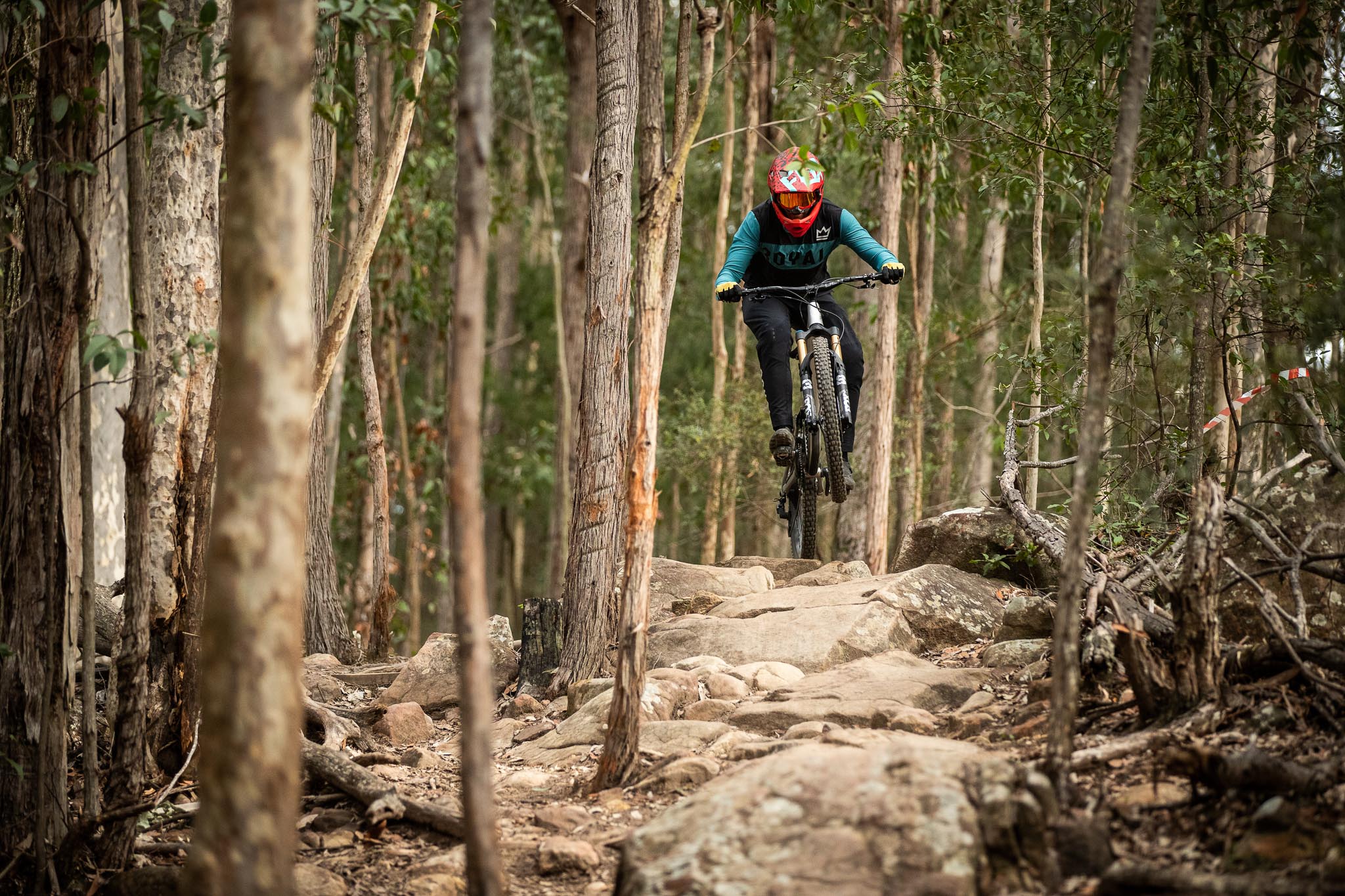
Most of the riding local to me is on the smoother side of the spectrum. This terrain favours a bike that can pump transitions for speed and reacts quickly to sharp pedal strokes between corners or features. The Shore 1 isn’t the bike for these smooth trails. Whilst you could alter the suspension to make the bike more active on smoother trails, if your regular riding demands a bike that’s versatile across both smooth and chunky terrain, the Shore mightn’t be the bike for you. I’d say it’s a combination of the weight, active suspension, geometry, and smaller wheels that don’t allow the Shore to pick up speed as quickly as other bikes when you’re pumping a shallow backside or putting in a couple of pedal strokes before a switchback turn.
The trails I found myself seeking out on the Shore 1 were the rough, janky trails I avoid on anything with less than 170mm of travel. The traction and stability on offer with the Shore in ultra-rough terrain is second to none, and in rough straights I never felt like I hit the limits of the bike. In technical turns where on other bikes you’d be getting bucked off your line, the Shore 1 remains composed and you’re able to stay focused on looking ahead.
The calmness of the Shore 1 is largely down to the rear suspension design. The bike uses an elevated Horst Link layout with an idler pulley to route the chain over the main pivot. This design allows for a rearward axle path without the con of pedal kickback. What this means out on the trail is when you compress the suspension the rear wheel moves backwards, and the bike lengthens out. When you’re riding through rough terrain in a straight line you feel low and central on the bike, and the Shore’s rear suspension eats everything up with minimal feedback to the rider. Something I really enjoyed on the Shore was pumping through rough turns. Despite using a coil shock, there’s good mid stroke support on the Shore that allows you to push through rough turns and carry momentum on the exit, whereas riding these turns on other bikes requires all your focus to simply stay in line.
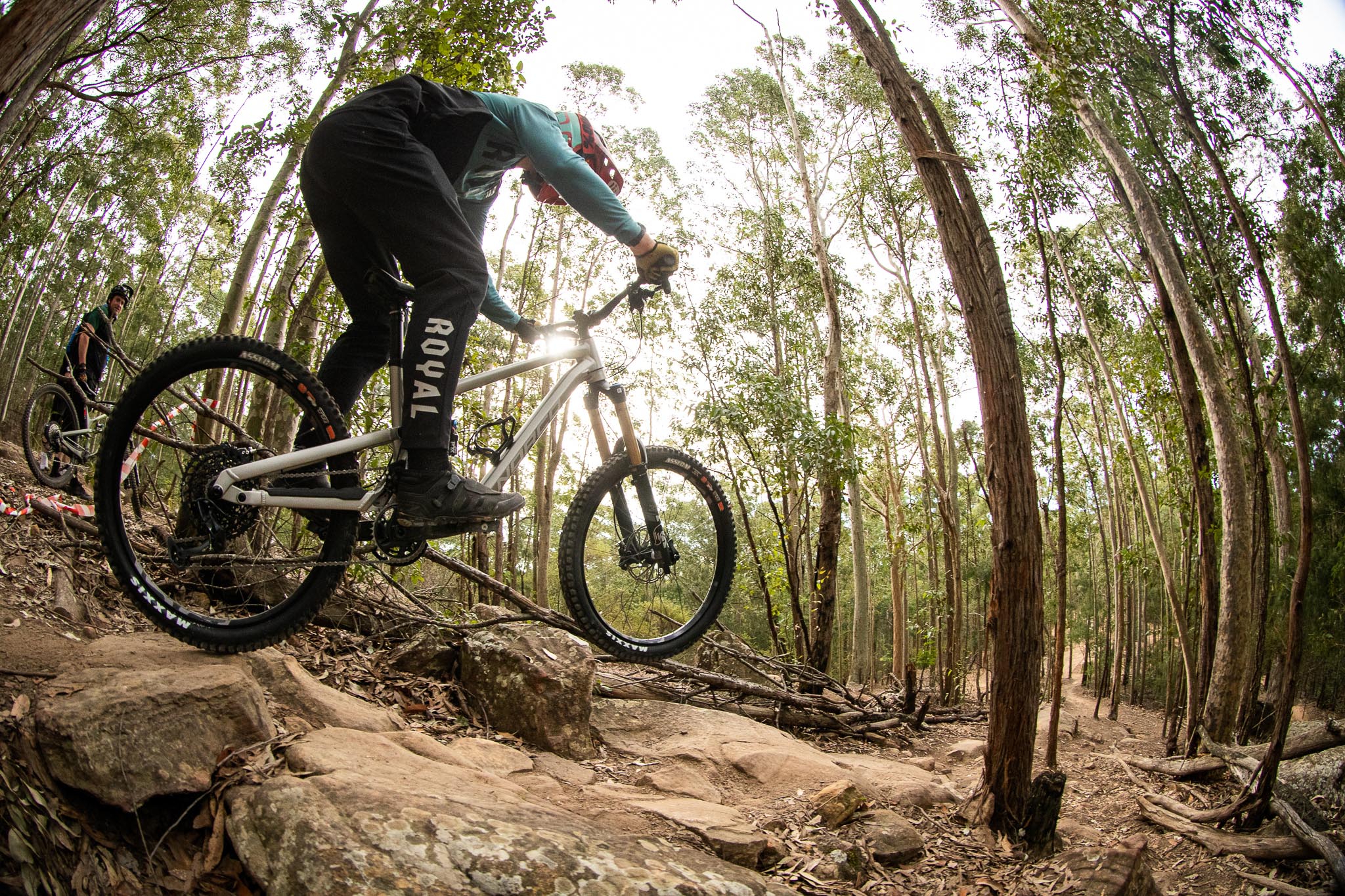
Norco have designed the Shore specifically around a coil shock and for there to be enough progression for big hits. The rear suspension is something they’ve nailed for the intended use of rough and rowdy terrain. Whilst the Shore isn’t poppy, it does react predictably and ramps up nicely when pre-loaded into jumps. The rear suspension’s performance is matched by Fox’s 38 Factory fork with 180mm travel, which is an incredible fork for rowdy terrain.
The other style of trail I enjoyed on the Shore 1 was steep terrain. With huge levels of traction and smaller wheels, the Shore 1 allows you to get off the brakes with the knowledge you can pull the bike up quicker than a 29” bike, and that sharp direction changes are also more easily managed.
Our Take
The Norco Shore 1 is exactly what Norco market it as, a bike aimed at riders who aren’t interested in anything but the roughest and gnarliest trails. The Shore 1 isn’t the right bike for riders focusing on Enduro racing, as there’s better options for the variety of terrain Enduro stages use.
I think Norco deserve credit for nailing the spec of the bike. It’s much easier (and cheaper) to spec EXO tyres and light wheels to hit the scales at a lower number. The Assegai front and rear combination with Double Down casings is the right choice of tyres for this bike, and I had no issues with any of the componentry throughout testing.
In terms of value for money I think Norco are to be commended. Whilst $7500 isn’t cheap, you’re getting top-of-the-line suspension and brakes, great wheels, tyres, and finishing touches such as a high-end cockpit. Norco have spent money where it counts on the Shore 1, and elements that aren’t top of the line such as the TranzX dropper are exactly where I’d save if I was undertaking a custom build.
The closest bike to compare the Shore 1 with is the Canyon Torque, although they have two models that sit on either side of the Shore 1’s pricing and both use carbon frames (the CF 7 at $6399 and the CF9 at $9099). The Shore 1’s pricing is competitive when you consider Canyon are a direct-to-consumer brand. At $7499 and with the performance it offers, I wouldn’t hesitate to recommend the Shore 1.
SPECIFICATIONS
Brand: Norco
Model: Shore 1
RRP: $7499
Weight: 17.35kg (size large)
From: www.advancetraders.com.au
Available Sizes: S, M, L (tested), XL
Frame Material: Alloy
Fork: Fox Factory 38, GRIP 2, Float, 180mm, 44mm Offset
Shock: Fox Factory DHX2, 225x70mm, 500lb spring (size dependant)
Shifter: SRAM GX Eagle
Derailleur: SRAM GX Eagle
Crank: SRAM GX Eagle, 34 tooth, 170mm
Bottom bracket: SRAM DUB, BSA Threaded
Chain: SRAM Eagle
Cassette: SRAM Eagle XG 1275 10-52 tooth
Hubs: DT Swiss 350, 6 bolt
Spokes: DT Competition DB Stainless Black
Rims: e*thirteen LG1 DH 27.5”
Tyres: Maxxis Assegai 2.5”, 3C Maxx Grip, DD
Brakes: SRAM Code RSC, Metallic Pads
Stem: CNC Alloy, 40mm Length
Handlebars: Deity Ridgeline 35, 800mm width, 25mm rise
Seatpost: TranzX (150 – 200mm depending on size)
Saddle: SDG Bel Air V3

